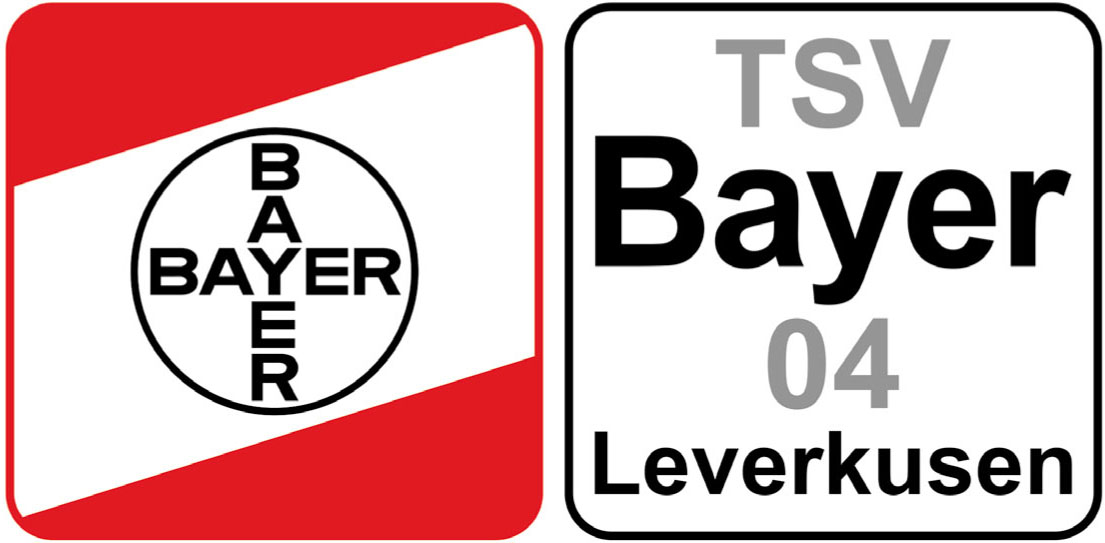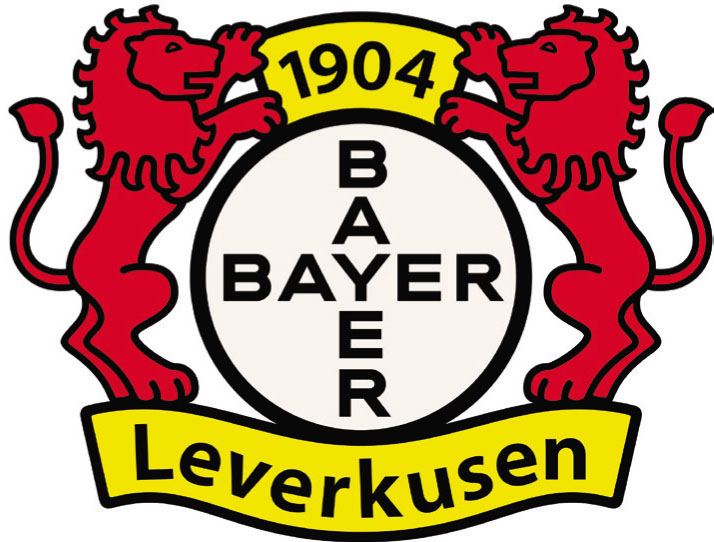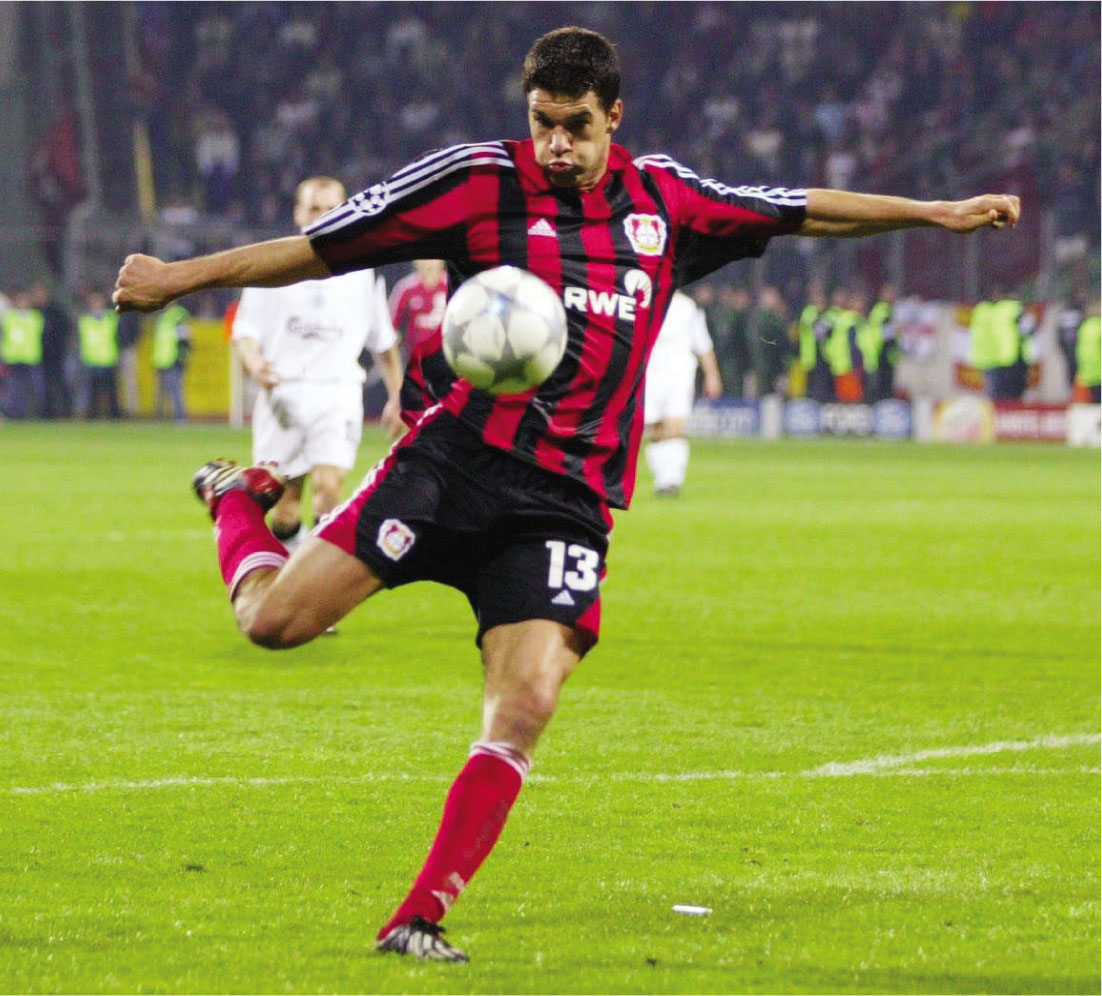
BAYER 04 LEVERKUSEN
THE PHARMACEUTICAL COMPANY’S PLAYTHING
It can’t be easy to be known as the eternal runners-up. Just ask Bayer Leverkusen. The club bears the nickname Neverkusen because of their inability to win any titles. They have, in fact, won both the UEFA Cup and the German Cup, but it’s the losses, the near misses for which the club is remembered. Bayer Leverkusen have finished in second place in the Bundesliga on a handful of occasions. Worst of all must be the 2001/2 season. Then, with players like Michael Ballack, Lúcio and Zé Roberto, the team finished second in the league, the cup and the Champions League. To rub salt in the wound, some of the club’s German players also played in the team that lost the World Cup Final that summer.
Bayer Leverkusen’s stamp as eternal losers is somewhat unfair if you consider the club’s geographical conditions. With its 161,000 inhabitants, Leverkusen sits squeezed into the centre of North Rhine-Westphalia. The area borders Cologne with its million-plus inhabitants, and shouldn’t really be able to measure up against the other clubs in the area, such as Borussia Dortmund, Schalke 04 and Fortuna Düsseldorf. The reason that little Leverkusen does have a top team in the Bundesliga is money. In Germany it’s forbidden for any individual person or company to own 50 per cent or more of a club. This is in order to promote the influence of members over the sport. There are, however, exceptions and one of them is Bayer Leverkusen. The sports club was founded by workers at the pharmaceutical enterprise Bayer AG, so the company has been given special dispensation for their ownership, a fact which means that the club can be where it is today in spite of tough demographic conditions.
CLUB: Bayer 04 Leverkusen
NICKNAME: Werkself (the Company Eleven), Pillendreher (the Pill-Makers) and Neverkusen
FOUNDED: 1904
STADIUM: BayArena, Leverkusen (30,210 capacity)
HISTORIC PLAYERS: Thomas Hörster, Ulf Kirsten, Lúcio, Michael Ballack and Stefan Kießling

1904–1907. As Bayer Leverkusen was formed by the workers at Bayer AG, it was self-evident that the emblem would refer to the company. Hence the globe, Bayer AG’s traditional lion and the staff in its paw. The staff is called Kaducé and symbolises peace, trade and economy. It can be found in Greek and Roman mythology and is carried by both Hermes and Mercury (the same god in the respective mythologies). Not until 1907 was football incorporated into the club, and on Christmas Day in the same year the team played their first match with this crest.

1950–1969 and 1969–1975. In 1923 the football section parted company with the club and was named Sportvereinigung Bayer 04 Leverkusen. Thirteen years later, in 1936, the players wore the Bayer cross for the first time, and this is now a well-known symbol for the club, the company and the town. The cross stands in the centre of Leverkusen and is hard to miss. The club crest was created years before it came to be used on the kit. It has appeared in a number of variations over the years, two of them shown here.

1975–1996. In the middle of the ’70s the club was represented by an unusual divided emblem. On the left is the Bayer cross and to the right the name of the club. Both the colour and text of the crest would be changed four times; this version represented the club between 1988 and 1996.

1996–present. The lion from Bayer Leverkusen’s first crest made a comeback at the end of the last millennium. But instead of one lion there were now two flanking the Bayer cross. The year of the club’s birth is also shown. Soon after the presentation of this emblem the club experienced its golden era, securing four runners-up places in the Bundesliga in five years (1997–2002).

Michael Ballack was a driving force in taking Bayer Leverkusen to the Champions League final in 2002, where they were defeated 2-1 by Spanish giants Real Madrid.